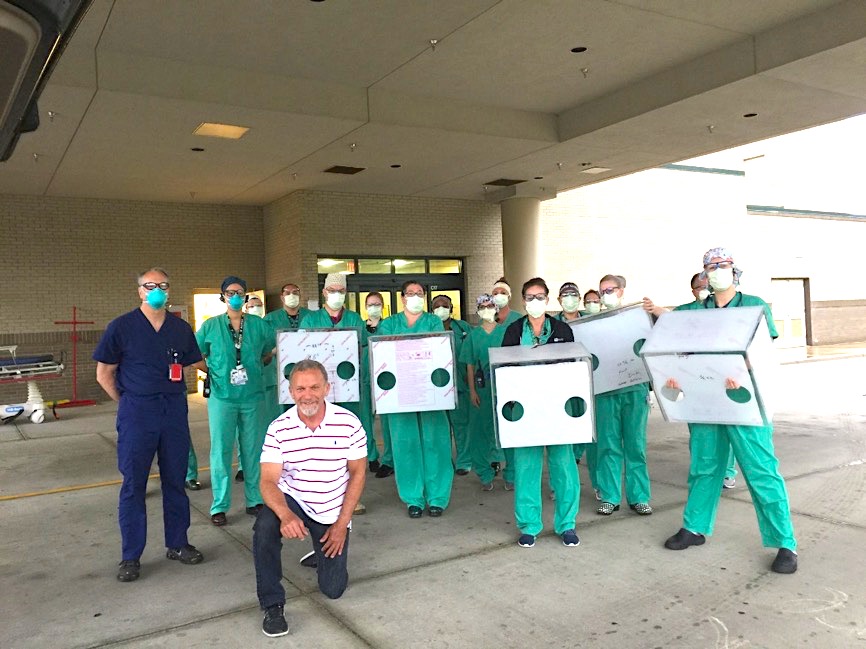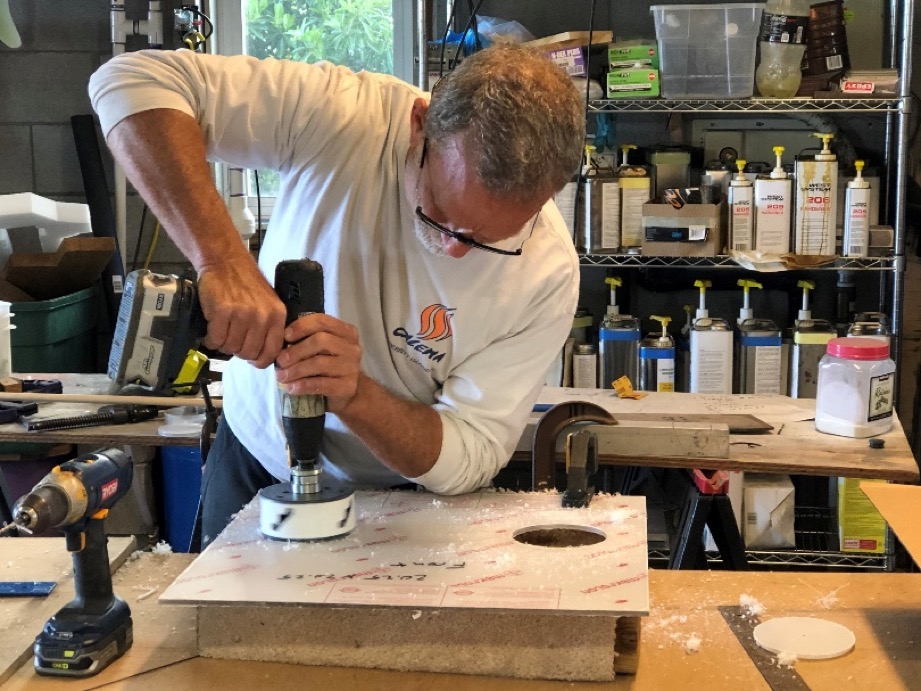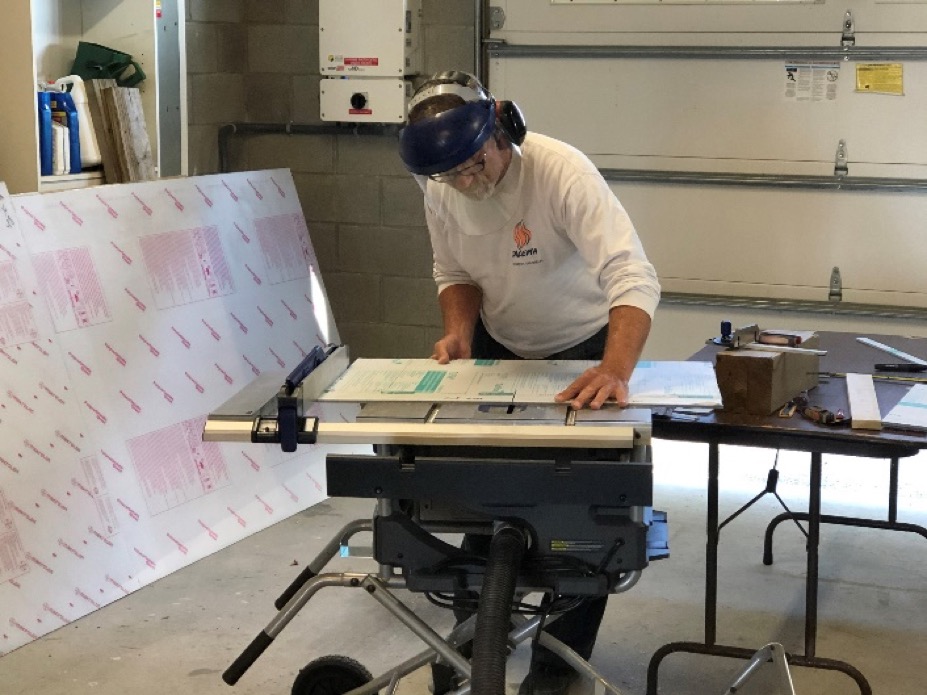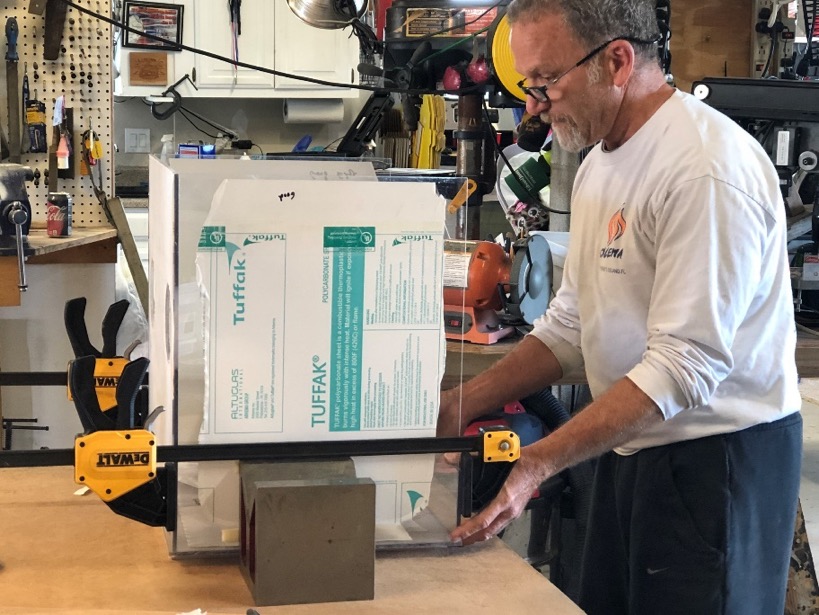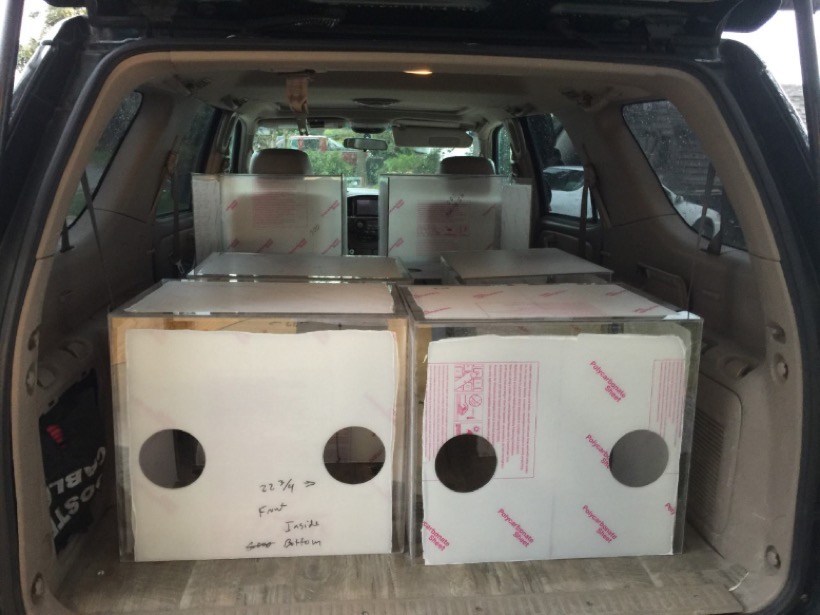Dave Kashy, a principal engineer in Jefferson Lab’s Magnet Group, who usually designs magnets to support the lab’s physics program has been using his time and expertise off-hours to help local hospitals fill a pressing need for intubation boxes.
A Jefferson Lab engineer builds intubation boxes to protect medical staff at local hospitals
This article is the second in a series of articles about members of the Jefferson Lab community who are using their personal time and expertise to help the local community in the face of the pandemic.
Although the U.S. Department of Energy’s Thomas Jefferson National Accelerator Facility has suspended operations of its nuclear physics experiments so employees can work from the safety of their homes, some are helping out in the community on their personal time.
That includes Dave Kashy, a principal engineer in Jefferson Lab’s Magnet Group who usually designs magnets to support the lab’s physics program. Right now, like his peers, he’s working from home as the lab’s Continuous Electron Beam Accelerator Facility sits in standby mode ready to resume operations as conditions allow.
He’s been using his time and expertise off-hours, however, to help local hospitals fill a pressing need for intubation boxes.
Intubation boxes are a barrier between medical personnel and a patient during the intubation procedure, which is when a tube is inserted through the mouth and into the airway. While this procedure is required to connect patients to a ventilator, it has a high risk of exposing medical staff to the virus.
“The procedure may cause potential virus particles to become airborne,” said Dr. Gary Kavit, the medical director of Riverside emergency department at Riverside hospitals. “Even though we wear high-level Personal Protective Equipment (PPE) during the procedure, there is potential risk to medical providers.”
Intubation boxes look like clear boxes, but are missing the side that rests on a patient’s chest, and another side features arm holes that allow medical staff to work on the patient. Emergency departments, intensive care units, and operating rooms across the country are using these simple devices as an additional layer of protection against the virus.
Kashy’s involvement with intubation boxes began when a friend of his wife, a nurse, asked if he could help her quickly get some intubation boxes. After doing some research, Kashy contacted the nurse to say he could make some, but she’d already found another source.
“So I kind of forgot about it,” Kashy said. “But I’d really found everything I needed.”
Two days later, Kashy received an email from one of his friends, a doctor, who was also requesting intubation boxes for a local hospital. Kashy agreed, but again the hospital found another source before Kashy could help.
“After the second cancellation, I knew this is obviously something the local community needs, and I’d figured out how to build them, so I called a good friend,” Kashy said.
That friend was Kavit, head of the emergency department of Riverside hospitals. While the Riverside hospital system was not in crisis, Kavit said they could use five or six intubation boxes, so Kashy finally began constructing intubation boxes in earnest.
He immediately ran into trouble. Intubation boxes are made out of polycarbonate, which is 20 times stronger than normal acrylic plastic but can still flex, meaning less chance of breakage. But polycarbonate was proving difficult to find.
“This material is extremely hard to get right now because everybody and their brother are buying it for protective shields,” Kashy said. Polycarbonate is being installed at checkouts in many stores to protect employees and customers. “If you’ve been to stores you’ve probably seen some.” He had to wait until April 16, when the next shipment was due to arrive at a vendor in Norfolk, to actually start building the boxes.
But on a windy weekend afternoon, as Kashy was driving to windsurf in Hampton, Kravit called him with bad news: he needed the first batch as soon as possible, plus an additional five more, even though Kashy hadn’t even started building them yet.
“I was like, Oh no, this is really bad,” Kashy said. He immediately pulled off the highway to check for polycarbonate at a local home improvement store, but they didn’t have any of the material in stock, either.
As soon as he got back on the highway, he realized a glass shop might carry polycarbonate. When he called a local glass shop in Norfolk, his search was over. They still had one full sheet and some partial sheets left of polycarbonate. He put it all on hold over the phone and picked it up after his windsurfing session.
There was just one more issue: the local machine shop that had volunteered to cut polycarbonate sheets into usable squares for free was closed for the weekend. To meet the urgent need, Kashy would have to do it himself.
With a new blade for his table saw and newly acquired YouTube knowledge, he figured out how to cut the material and glued his first box together.
The next morning, he met up with Kavit to check the box’s dimensions. It was a bit small in the shoulders, but would work in the pediatric ICU. After adjusting the dimensions, Kashy cut up the remaining sheets, glued the pieces together, and had six more boxes ready by Sunday night.
He delivered the seven boxes on the morning of Monday, April 13, to nurses waiting outside Riverside Regional Medical Center in Newport News.
“I felt good to be there when I drove up and saw those nurses out there,” Kashy said. “It was very exciting and I was happy that they were so happy to receive these things.”
Kavit was also pleased.
“Dave Kashy’s initiative to collaborate with me to bring an extra level of safety to our staff is profoundly appreciated,” he said. “Riverside is keenly focused on keeping staff, as well as patients, safe during this pandemic.”
Kashy will produce five more boxes for Riverside when more polycarbonate arrives at the vendor. This time, the material will be precut, which will speed up the process.
“I’m an engineer by training, but I’ve always been very mechanically adept,” Kashy said. “I have a great garage with lots of tools, and I think the people that have asked me to do it know this about me, and that’s why they asked me to help.”
By Chris Patrick
Other articles in this series:
Making a Difference One Mask at a Time
Helping Others Through Thoughtful Donations
Contact: Lauren Hansen, Jefferson Lab Communications Office, 757-269-7689, lhansen@jlab.org


